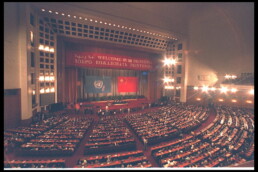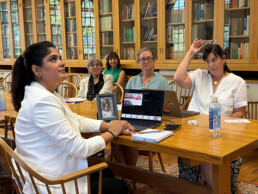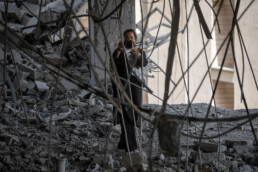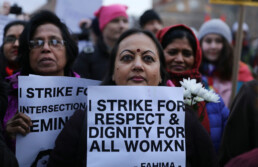"A revolution has begun. There is no going back."
On the anniversary of the Beijing women’s conference, a blueprint for a brighter future
Thirty years ago this month, women from around the world gathered for a conference that made history and, as it turned out, would not happen again. The 1995 UN Fourth World Conference on Women in Beijing was a monumental moment for activists and world leaders who came together to “answer the call of billions of women who have lived, and of billions of women who will live,” as the first female Prime Minister of Norway, Gro Harlem Brundtland, put it at the time. It’s the meeting at which then-First Lady Hillary Rodham Clinton, building on years of women’s organizing, famously said, “Women’s rights are human rights,” which made global news because it was (and apparently remains) a radical perspective.
The journey to the conference—which is documented in a new multimedia project from the United Nations Foundation and co-produced by The Meteor—was two decades long, with previous meetings held in Mexico City, Copenhagen, and Nairobi. Beijing itself was the largest women’s rights gathering at that point in history, with a massive audience of 45,000 people invested in building a better future. Pulling it off was no small task, but the leaders charged with doing so were more than up to it. Among them was the inimitable Gertrude Mongella of Tanzania, the Secretary-General of the conference, who later became known as Mama Beijing. “A revolution has begun,” she said during a closing speech at the Conference, “there is no going back.”
Mongella was a key player in producing the Beijing conference’s most significant document: The Beijing Declaration and Platform for Action—which remains the most comprehensive blueprint for gender equality and women’s rights ever created. It wasn’t just a wish list; 189 countries committed to it in Beijing. It demanded women’s inclusion in government and policymaking; economic policies built with gender in mind; the understanding that violence against women is a human rights violation; and was also one of the first international agreements to demand that governments complete a thorough analysis of how climate change and industrialization had affected women. From the Platform: “The continuing environmental degradation that affects all human lives has often a more direct impact on women…Those most affected are rural and Indigenous women, whose livelihood and daily subsistence depends directly on sustainable ecosystems.”
You probably know how this ends: While some of the Platform’s key goals have been achieved—women’s representation in government, for instance, has risen—many have yet to be fulfilled, 30 years later, not because of an absence of activism, but because of global backlash and competing priorities. But the women at the forefront of global change remain motivated. When asked what the next global feminist conference should focus on, Nyasha Musandu of the Alliance for Feminist Movements put it this way: “We must dare to dream bigger, disrupt deeper, and build bridges across movements. The fight for justice is not just about breaking barriers—it’s about reimagining the world itself.”
Four years of the Taliban
 August 14, 2025 Hi Meteor readers, Popping in for the second time this week with a recommendation so fervent, I had to commandeer the newsletter to make it. Last night, I finally saw the Tony-nominated play John Proctor Is the Villain, and I’m still levitating. I cackled with laughter. I cried! The show is set in a high school in rural Georgia, and it unfurls as a class of students reads Arthur Miller’s The Crucible while the #MeToo movement swirls. There are meditations on trust and friendship, jokes about Glee, an epic interpretive dance, feminism club, and such biting, clever dialogue that of course Tina Fey has signed on to produce the movie adaptation. It’s pitch-perfect and brilliant, and here I was thinking 2018 was not a period of time I wanted to revisit at all. If you are anywhere near New York, you must, must, must see it before it closes on September 7. That concludes The Meteor’s Theater Corner. Meanwhile, a special edition of the newsletter below: Today we have a beautiful and moving reflection from Lima Halima-Khalil, Ph.D., who writes to us on the eve of the fourth anniversary of the U.S. withdrawal from Afghanistan, recalling the tumult and horror of that day and sharing her own perspective as a millennial, mom, and researcher in 2020. But first, the news. Stage whispering, Mattie Kahn  WHAT'S GOING ONTaylor Swift, Taylor Swift, and Taylor Swift, for starters. Also, Trump is headed to his much-heralded summit in Alaska, where he’ll meet with Russian President Vladimir Putin. (There will be no showgirls.) Back at home, historians are rightfully freaked out that the White House has expressed a desire to “review” exhibits at the Smithsonian’s museums and galleries, which is the kind of thing that isn’t supposed to happen in democracies. To be clear:  AND:
 “Life is Still An Open Wound”Four years after the Taliban seized her country, Lima Halima-Khalil, Ph.D., reflects on the losses, joys, and complexity of life for young Afghans.On August 15, 2021, time did not just stop; it dissolved. One moment, I was at my desk in Virginia, an Afghan researcher piecing together the life stories of Afghan youth for my doctoral research; the next, I was holding my breath between phone calls I could not miss. My computer screen became my only window to my country slipping away: convoys of cars carrying loved ones I could only follow on Google Maps, the low, frantic hum of evacuation messages on WhatsApp, and the heavy silence between each update. That day marked the beginning of the final withdrawal of American troops from Afghanistan, following a deal signed with the Taliban that effectively handed the country over to them. The elected president fled, and fear settled like smoke across the nation. Thousands rushed to the airport in blind panic, terrified of what the return of Taliban rule would mean. Many of the young people I had interviewed joined the crowds at the gates along with their families (and mine too), desperate for a flight to anywhere. Between August 15 and the final U.S. military departure on the night of August 30, over 200 people died at or near the airport: some trampled in stampedes, some shot, some who fell from planes, and 182 of them killed in a suicide bombing on August 26.  THE AUTHOR, LEFT, DEFENDING HER PH.D. ON AFGHAN YOUTH EARLIER THIS SUMMER. It is hard to explain how, in an instant, everything that anchors your life, your home, family, career, the freedoms you’ve built over a lifetime, can be stripped away. You are left with two choices: walk through the valley of death into a new world naked without any resources, or stay in darkness, losing every human freedom and shred of dignity under the Taliban barbarism. Every year on this day, I try to tell my story and the stories of hundreds of my countrymen and women. I have never quite managed to capture the full weight of what we lived through, or what we are still enduring. But I know who I am: I am Lima Halima-Khalil, and I know that if we do not tell these stories, we risk losing more than a country; we risk losing the truth of who we were and who we still are. Watching My Country DisappearThat day, as haunting footage of young men clinging to U.S. military planes, their bodies falling through the sky, was shown over and over on TV, my inbox was flooded in real time: “Lima, they’ve reached the city gates.” “My office is closed, they told us not to come.” “Can you help me get my sister out?” I typed until my fingers ached—evacuation forms, frantic emails, open tabs of flight lists—while my mind kept circling back to my sister Natasha. She was 24 when the Taliban killed her with an IED in 2020 on her way to work. Every young woman who called me that August day and over the last four years sounded like her: “Please, Lima, don’t leave me here. Save me.” Somewhere in that blur of urgency and grief, I knew I was watching my country disappear in real time. The words of one young woman—an accomplished artist—still echo: “I wasn’t mourning just a country. I was mourning the version of myself that could only exist in that Afghanistan.” In the months and years that followed, I carried my interviewees’ stories inside me. I felt the humiliation of the young woman who had to pretend to be the wife of a stranger just to cross a border. I felt the fear of the female journalist who hid in the bathroom each time the Taliban raided her office. I felt the silent cry of the father who arrived in a foreign land with his toddler son and wife and wandered the streets in winter, looking for shelter. I had nightmares over a young man’s account of seven months in a Taliban prison, tortured for the “crime” of encouraging villagers to send girls to school. Four years later, August 15 is still an open wound. Afghanistan is now the only country in the world where girls are banned from secondary school and university. Women are barred from most jobs, from traveling alone, from their own public spaces. Half the nation is imprisoned; the rest live under constant surveillance. Believing in ChangeHowever, the past four years have not been made up of grief alone. Even in exile, even under occupation, life has found a way in. I have witnessed many Afghan women earning their master’s degrees in exile. I have seen my young participants inside the country opening secret schools for Afghan girls in their homes and enrolling in online degree courses, while those in exile run online book clubs and classes for girls, refusing to let hope die. I have seen families reunited after being separated for four years. I see Afghan identity and tradition celebrated more than ever. In my own life, some moments reminded me why I still fight: celebrating the birth of my daughter, Hasti; dancing with friends after completing 140 hours of interviews for my PhD; standing on international stages to speak against gender apartheid, carrying my participants’ words across borders; watching my research shape conversations that challenge the erasure of my people. Like the two sides of yin and yang, these years have been both destructive and generative. One hopeless day, I called a participant still in Jalalabad. Halfway through, I asked, “What is giving you hope today?” She didn’t pause: “The belief in change. I don’t believe things will remain like this, where women are not allowed to live with full potential in our country. I will not stop my part, which is to keep studying and to believe that I will be the first female president of Afghanistan.” Hope resides in me, too. This year, on this painful anniversary, I ask the world: the war that began in 2001 was never Afghanistan’s war, and today, it is still not the burden of Afghan women and girls to carry alone. So please, don’t turn your face away. Do not accept the narrative that this is simply Afghan tradition, that women are meant to live like this. That lie has been fed to you for too long. The women and girls of Afghanistan are humans. Until we see them and treat them that way, this gender apartheid will not end.  Lima Halima-Khalil, Ph.D., is the program director of the “I Stand With You” campaign at ArtLords, a collective she co-founded, where she mobilizes global awareness against gender apartheid in Afghanistan. Her research explores youth resilience amid violence and displacement. Her writing has appeared in Foreign Policy, TRT World, and academic publications.  WEEKEND READING 📚
 FOLLOW THE METEOR Thank you for reading The Meteor! Got this from a friend?
|
![]()
They Were Told “Don’t Write, Don’t Post, Don’t Report”
For Iran’s fearless women journalists, every byline is a form of rebellion
By Tara Kangarlou
“To be a war correspondent is like a wounded dove flying through a pitch-black tunnel. It crashes into the walls over and over, but keeps going, for a chance to send the message, to save others,” says Arameh, a 40-year-old Iranian journalist. She and her two colleagues, Samira, 39, and Parvaneh, 27 (all have been given pseudonyms for their safety), are among the many brave Iranian journalists who remained on the ground in Tehran to report on the 12-day Israel-Iran war earlier this summer.
The women work for one of Iran’s prominent news sites, covering social, local, and political issues. Although the outlet is independently owned, it still falls under the heavy scrutiny of the Islamic regime’s watchful eyes. (Out of the utmost caution, we’ve withheld the name of the website.) “Despite slow internet and censorship, we wrote, posted, and published” throughout the war, recalls Arameh. “With images of blood and death flooding in, we kept reporting.”
Ultimately, Iran’s missile attacks on Israel killed 28 people and wounded more than 3,000, some of them civilians. Israeli airstrikes on Iran killed more than 1,190 people and injured 4,475, according to the human rights group HRANA. As in many conflicts, Western coverage of the war zeroed in on geopolitics: the Islamic Republic’s hardline rhetoric, the regime’s nuclear ambitions, and the fate of a theocracy teetering on the edge. Yet beneath those soundbites, a generation of fearless, tenacious young journalists—many of them women—tirelessly documented life under foreign bombardment and domestic censorship in the world’s third-largest jailer of journalists.
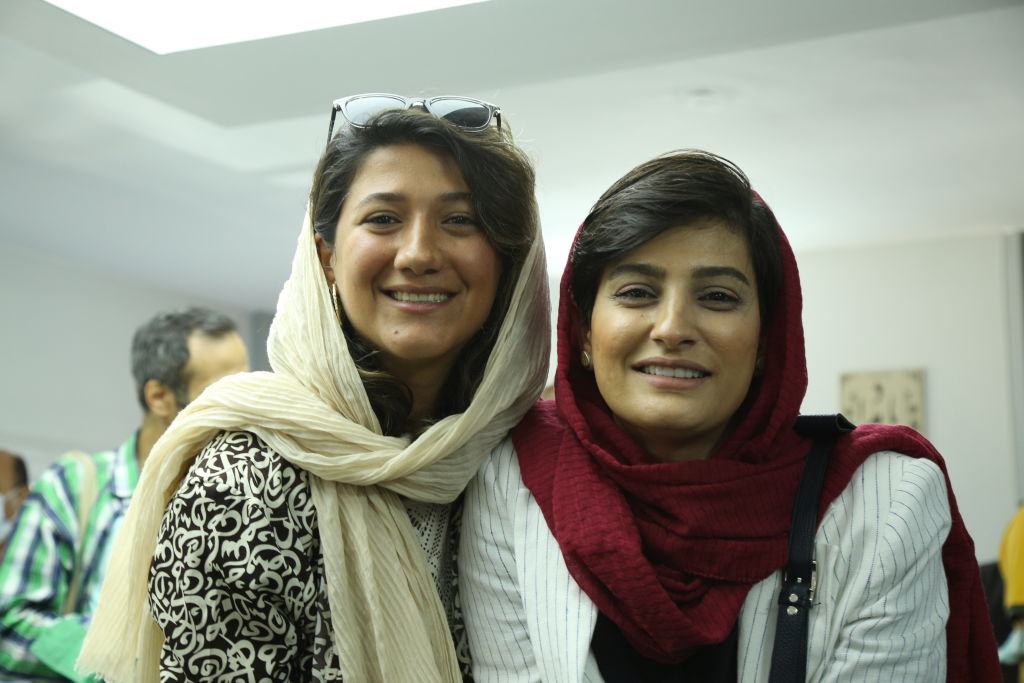
According to Reporters Without Borders (RSF), more than 860 journalists have been arrested, interrogated, or executed in Iran since the 1979 revolution, which brought the Islamic Republic to power. RSF also reports that since Mahsa Amini’s killing in September 2022, at least 79 journalists, including 31 women, have been detained—with some still behind bars. The International Federation of Journalists and Iran’s own Union of Journalists report even higher figures, estimating that over 100 journalists have been detained during this period, most in Tehran’s notorious Evin Prison. Among those held were 38-year-old Elaheh Mohammadi, her twin sister Elnaz, and Niloofar Hamedi, who first broke the news of Mahsa Amini’s killing for Shargh Daily in September 2022.
My connection to these women goes beyond our shared profession—I was born and raised in Iran and immersed in all the complexities of its everyday life; but today, as an American journalist with dual nationality, I can no longer return freely to my country of birth—simply because my profession is deemed threatening to the forces at home. I often have nightmares of being arrested in Iran or of never again seeing my childhood home; but what gives me hope is the strength of women like Arameh, Parvaneh, and Samira, who stayed. They do so knowing their government is always watching, listening, and ready to punish them for telling the truth.
These women were not just covering a war; they were surviving it.
On the war’s second night, 27-year-old Parvaneh tried sleeping in the newsroom as her home was in an evacuation zone. It was just her and the office janitor, whose pregnant wife and daughter had already left the city after their neighborhood was hit. That night, Parveneh recalled, “the sirens were so loud that neither one of us could sleep, so I stayed up all night and covered the strikes.”
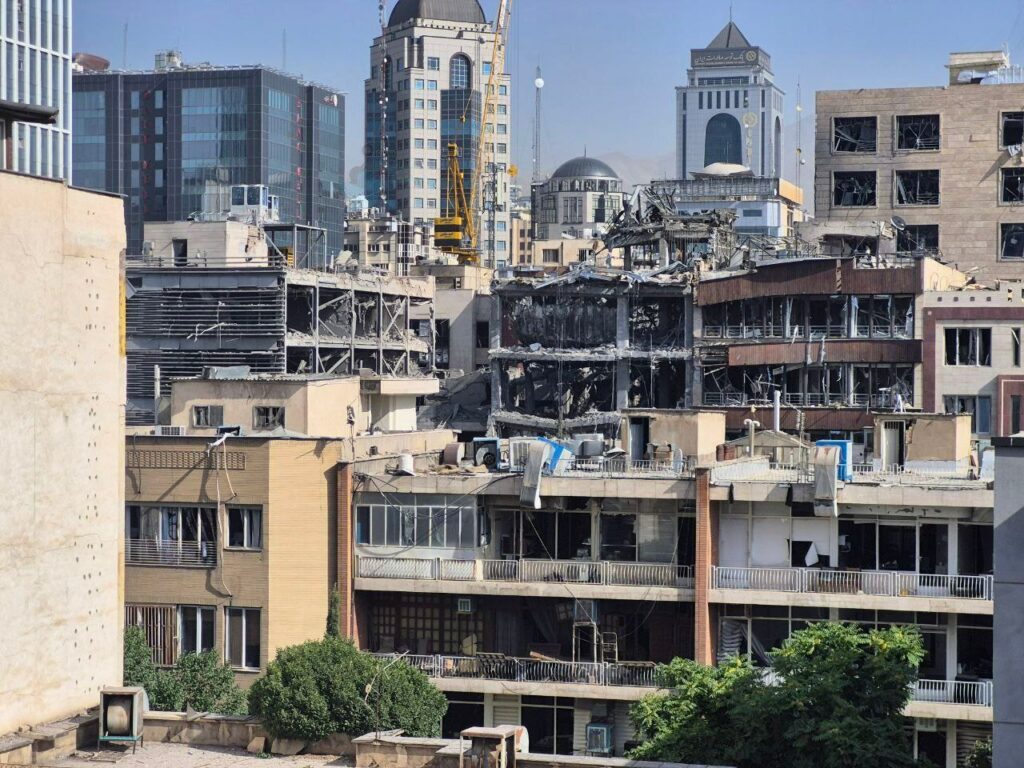
On day three, Arameh convinced her aging parents, brother, sister, and five-year-old niece to leave Tehran without her. “With each strike, I’d tell my niece it was a celebration or fireworks,” she recalls, heartbroken that the little girl believed her each time.
Similar to many other journalists and photographers in the country, Arameh and her colleagues received anonymous calls from intelligence agents and government officials warning, “Don’t write. Don’t post. Don’t report.” But as always, they did. Samira reassured her mother, whose brother was killed in the Iran/Iraq war in the 1980s, that she would not leave Tehran. “I’m a journalist,” she explains. “If I’m not here in these days, it would be like a soldier abandoning the battlefield.”
“We adapted; we always do,” Arameh says. “We stopped giving exact locations or numbers. Instead, we reported where sirens were heard. We told people how to protect their children. In times of war, a journalist must also be a source of empathy.”
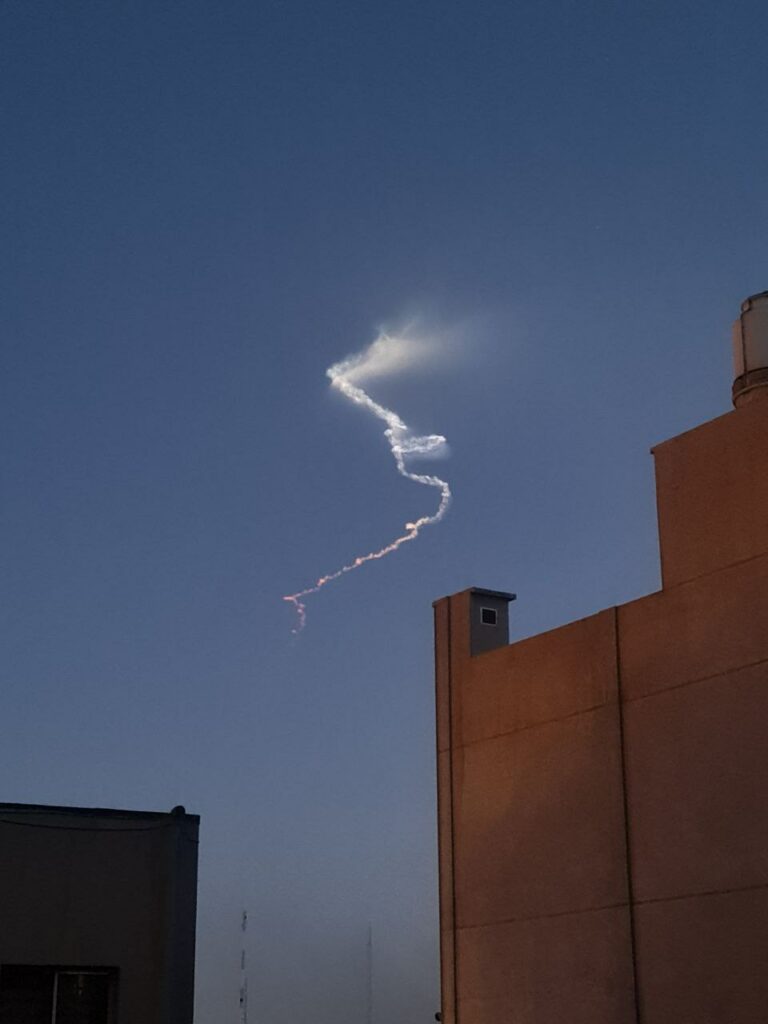
For journalists in Iran, adaptability is a necessary skill as they navigate censorship, surveillance, and threats from a regime that has long waged war on its own press. These women documented both the human devastation of the war—including the Tajrish Square bombing that left 50 dead—but also the ongoing intimidation from the state toward members of the press. That intimidation extends to those who defend journalists as well. Human rights lawyers such as Nasrin Sotoudeh, Taher Naghavi, and Mohammad Najafi have been imprisoned for the “crime” of representing journalists and activists.
“My beautiful Tehran felt like a woman who had been brutally violated; battered, broken, bleeding,” says Samira, recalling the last night of the war. “It was the worst bombardment; something inside us died, even as the ceasefire began.”
On June 23, just one day before the ceasefire that would end the war, Israeli airstrikes hit Evin, killing at least 71 people—among them civilians, a five-year-old child, and political prisoners, including journalists. Nearly 100 transgender inmates are presumed dead—all people who should never have been there from the start.
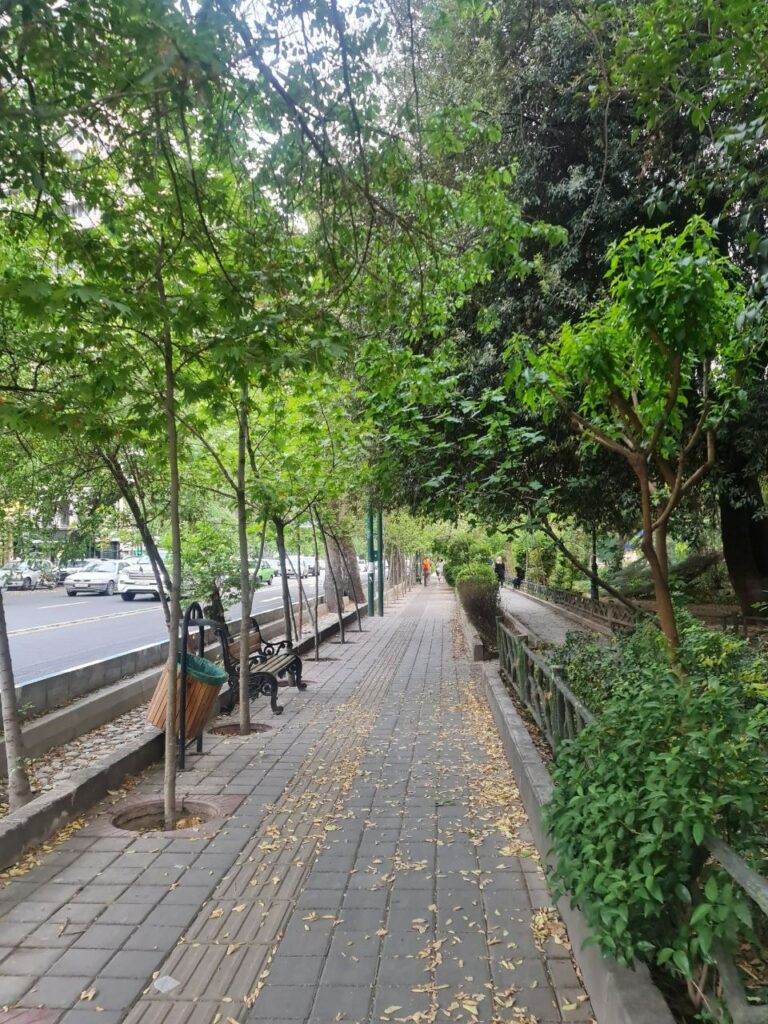
The world often celebrates Iranian women in hashtags and headlines, but falls silent when it comes to tangible support. Heads of state, renowned public figures, and human rights organizations call for freedom and justice, but political inaction persists.
“If such strikes happened elsewhere—especially Europe or the U.S.—the world would’ve cried out,” Arameh says. “But in Iran, the Iranian people are always defenseless. People around the world talk about loving Iranians, but…we are once again left alone in our pain.”
Iranian journalists are not asking to be saved. They are asking to be heard, to be respected as the only eyes and ears of millions whose voices have been stolen by a regime that does not represent them. More than anything, these independent journalists, who are not funded by the regime and continue to report under severe censorship and surveillance, are emblematic of a deeper reality: that Iranians—especially women, and especially young people—stand firm in their pursuit of truth, change, and growth, no matter the cost.

Tara Kangarlou is an award-winning Iranian-American global affairs journalist who has produced, written and reported for NBC-LA, CNN, CNN International, and Al Jazeera America. She is the author of The Heartbeat of Iran, an Adjunct Professor at Georgetown University and founder of the NGO Art of Hope.
A Global Backlash Against Women
 March 6, 2025 Hello, sweet Meteor readers, I live in the tundra, a.k.a. upstate New York, and to us, 50-degree days like the one we’re having today pass as signs of spring. That, and when my kid starts to come home from preschool covered in mud. It’s happening, y’all. Bring on the dirt.  Today, on the occasion of International Women’s Day, we take the temperature of women’s rights around the world. Plus, some good news for abortion, gender-affirming care…and your brain. Thawing out, Nona Willis Aronowitz  WHAT'S GOING ONA global backlash: International Women’s Day, celebrated every year on March 8, is always a good excuse to take stock of how women and girls are doing around the world. Two new reports confirm that there’s data behind what we can clearly see: There’s been a palpable backslide. A new poll conducted by Gallup in 144 countries asked participants, “Do you believe women in this country are treated with respect and dignity, or not?” and found that in 93 countries, women are much less likely than men to say yes. Echoing this data, a new report from UN Women has found that, precipitated by factors like COVID and political polarization, one in four nations reported that backlash impeded progress on women’s rights in 2024.  INTERNATIONAL WOMEN'S DAY RALLY IN NEW YORK CITY, 2018 (VIA GETTY IMAGES) Looking closer at Gallup’s results for the United States in particular, tells us a lot about how gender dynamics have changed here in the last decade or so. In 2012, a full three-quarters of women and 80% of men agreed that women in this country are treated with dignity and respect. Now, those numbers have plunged to 49% and 67%, respectively. That not only points to a huge gender gap in how respondents think women are treated (implying, perhaps, that men are not paying attention?) but a sharp decline overall. In fact, these percentages are the lowest in the United States since Gallup started these polls 20 years ago. So: Are they a bleak reflection of ways life has actually gotten worse for women since the fall of Roe v. Wade, the rise of far-right misogyny, and more? Or do they also show the rise in awareness of sexism and misogyny (a good thing)? For many women and some men, wake-up calls—like #MeToo and Trump’s two wins over two women—may have smashed any illusions of gender equality. Sexual harassment in the workplace was just as bad in 2012, for instance, but maybe now we’re more likely to notice it. Still, the data does make clear that when respondents say women are more likely to live without respect and dignity, they’re often right. The UN Women report found that in the last few years, discrimination against women and girls has risen, legal protections have lessened, the number of women and girls living in conflict has spiked by 50 percent, and funding for programs that support women has withered. If you’re looking for signs of progress, there are some: The report found some improvements over the last 30 years, like greater parity in education, one-third fewer maternal deaths, higher representation of women in parliaments, and more than 1,500 legal reforms striking down discrimination in 189 countries and territories. In a sliver of good domestic news, Pew Research Center also found in a recent survey that the pay gap has narrowed slightly in the United States. So the news isn’t all bad—but it’s a clear indication that progress isn’t linear and that we have a long way to go. The Gallup poll’s gender gap is most pronounced in young people; only 41% of young women think they’re treated with dignity and respect, as opposed to 63% of young men. This is depressing on one level but heartening on another: At least young women’s eyes are wide open to the work they still have to do. It’s an open question when and whether their male peers will get on board. AND:
 REPRESENTATIVE AL GREEN DOING WHAT MANY OF US WISH WE COULD DO: YELL AT DONALD TRUMP. (VIA GETTY IMAGES)
 WEEKEND READING 📚On hypocrisy: A pediatrician who left her seven-year-old daughter behind in the States to care for war-wounded children in Gaza confronts the monstrous lopsidedness of Western media covering the conflict. (LitHub) On loss: A mother writes a eulogy for her beloved Altadena house, which burned in the L.A. fires—and for a world in which the consequences of climate change seem remote (Romper) On reparations: Mina Watanabe explains the history of “comfort women”—a euphemism for women who were sex slaves for Japanese troops in the ‘30s and ‘40s—and what justice would mean for them. (New York Times)  FOLLOW THE METEOR Thank you for reading The Meteor! Got this from a friend?
|
![]()
